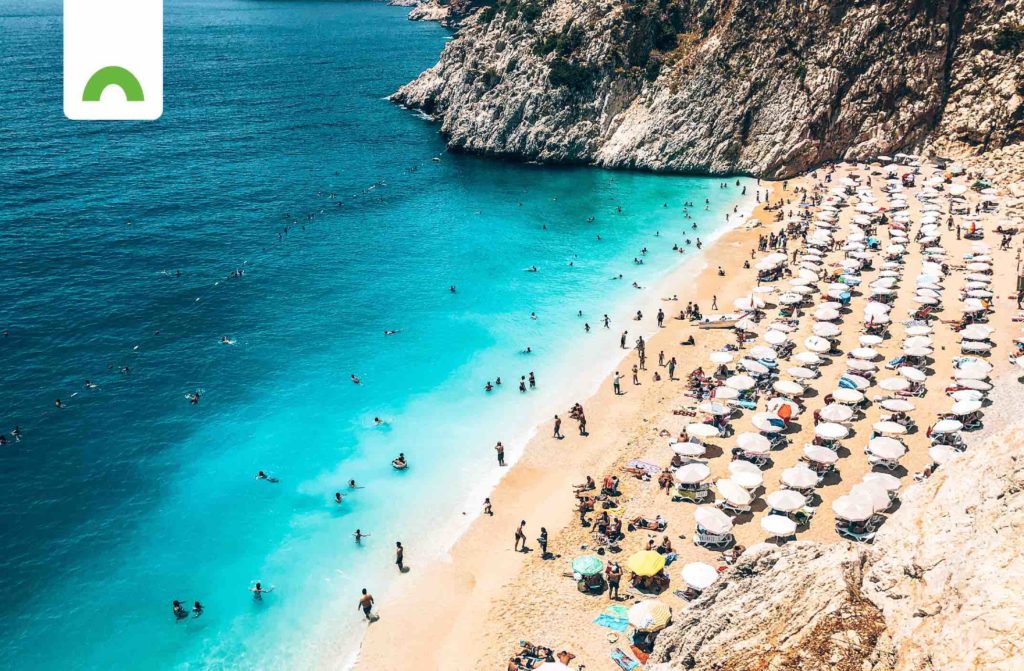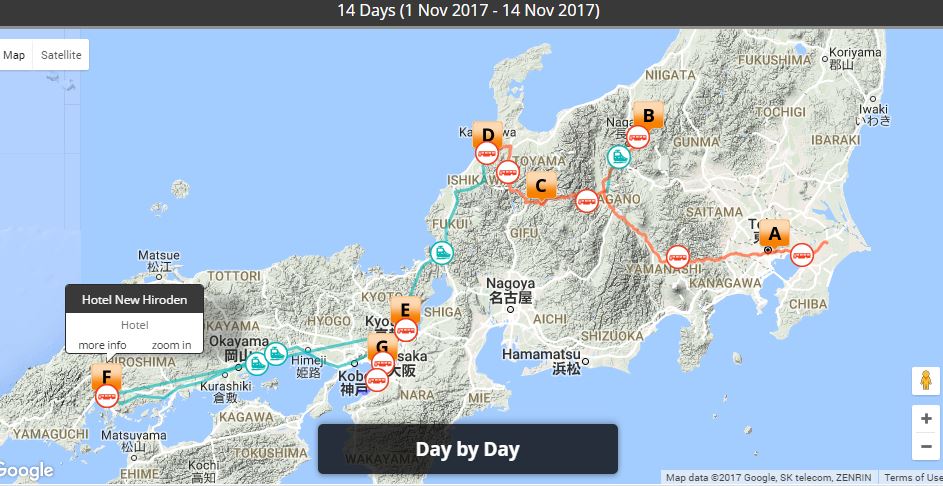The capacity to inspire action.. Good travel content strategy teases travellers, piques their curiosity, speaks to them in figurative and literal languages that resonate personally and psychologically, it instills trust and earns their loyalty, and it does all these marvellous things with eye-catching colours and cleverly worded text that manipulate the mind. And inspire action.
You’re an artist painting a travel portrait specifically for the art lover viewing it. What colours and theme do you use? After viewing it, what does the art lover take away from the experience? Are they moved to buy the portrait? Put a pretty, scenic picture on your website – many would admire it, but have you considered how relevant it might be to travellers researching their next holiday? Content should and can have the power to influence and induce the right kind of action, namely to convert lead to sale and keep clients coming back for future travel.
Content marketing invites storytelling – about the destinations you sell, the life-altering experiences you offer, about who you and your team are, what your brand stands for, and how invested you are in your client’s well-being. Storytelling builds relationships and transforms clients into loyal advocates. A story captures the imagination with real-life anecdotes of actual travel experiences, and you can tell it with pictures, words and video, even using the highly influential user generated content (UGC), courtesy of your satisfied clients.
Thought control. The psychology of content marketing warns about a condition called ‘Cognitive Dissonance’, loosely defined as that awful feeling in the pit of your stomach (stress) when you badly want something but you know it probably costs more than you should be spending.. know it? You’d better believe travellers feel that way too.
We can ease their suffering by providing valuable content to supplement our services and products – content in the form of helpful tips and advice, personalised imagery with video and virtual tours that illustrate how they as travellers would benefit from your experiences, even evidence of your own sampling of the products you sell.
Give your audience something insightful, beneficial for free, and they’ll reciprocate with loyalty to your brand. Another condition to note, ‘Confirmation Bias’, draws attention first to content that echoes preconceived notions about destinations/experiences travellers are interested in. Capitalise on the bias by mixing some iconic imagery into your customised content; viewers will recognise your content as trustworthy and look forward to exploring further.
Add some social proof to the mix by ensuring your content is shareable – your image galleries, itineraries, videos, your website. If your content is shared, endorsed and commented on, prospective clients will be more inclined to trust it. It’s honest, gentle manipulation.
Content strategy needs to incorporate travel motivations too. Imagine you’re marketing to specific nationalities: British, Italian and South African travellers, for example, are motivated by harmony (according to an Ipsos study); so for these groups your content should focus on imagery, colours and text depicting pampering and relaxation. If the majority of Asian travellers surveyed in the same study preferred immersive experiences, then target that audience with content depicting living-like-locals experiences.
An increased demand for custom trips requires both travel products and content to be developed jointly with trade partners. More collaborations need to happen across the board, including with preferred suppliers, to build rich, diverse destination content, especially given that formerly considered in-destination ‘value-adds’ are now standard requirement. Amadeus claims that large portions of emerging markets don’t know many international destinations well enough to make informed choices of where to go. They need destination content and practical travel information that’s fresh, easily accessible and enticingly presented.
What needs to be understood and conveyed with content is the fact that travel is rooted in personal experiences, perceptions and preferences; so empowering travel research with focused content choices makes your brand a trustworthy one.
Content hurdles. Modern consumers have it tough: they’re overwhelmed by superfluous content on the Internet, they’re short of time and generally short of attention span, they’re tired of seeing content mostly in English, and they’re annoyed when they can’t access and consume travel content easily. Your content strategy must jump these hoops and look good too.
Apparently the average consumer has a shorter attention span than that of a goldfish – you have 8 seconds before they tune out.
So while the first impression counts, it needs to last so that they keep looking. Focused and targeted content is kinder to time-strapped travellers, who have an idea of what they’re interested in but dread sifting through masses of irrelevant content before finding it.
Follow clear, discernible themes and customise your content to help travellers identify quickly which of your content applies to them. It isn’t as easy to solve the problem of having content in every single dialect on the planet, but translations into the majority languages is a leap in the right direction. Global travellers will vote with their clicks – onto the sites that speak to them in their own languages and off those that maintain a monolingual standard.
Getting strategic. We’re talking loads of high-res, landscape pictures from different storytelling perspectives, emotive colours and descriptions, featuring people or scenery of breathtaking beauty.. We’re talking clean, eye-catching UX design, interactive format, clever tools to distribute your content consistently across all channels and social sharing platforms, mobile.. That’s a mouthful, sure, but luckily the technology exists to make it work for you. But what’s the deal with visual? Forgive me for sounding puerile, but seeing is believing. It’s also feeling, smelling, touching, hearing. The right kind of imagery can appeal to the senses superficially and subliminally. As long as it’s true!
Today’s travellers spend time & money researching & planning the perfect trip, but all too often, they end up travelling to a destination that doesn’t live up to their expectations…
Tnooz
Cue the travel video and virtual tours or 360° images, staple ingredients for effective travel content marketing. Do them well, make them accessible, and they’ll ultimately shape travellers’ destination and activity choices with the power to guide them through the consumer journey from awareness to destination research and selection, to purchasing. But before we launch into that..
Why do we still insist on writing essays when a picture is already worth a thousands words? We know too that people generally read less and scan more. The human eye is drawn instinctively to visuals, so speak to the eyes! Movement draws and focuses attention even more.
As for text, keep it trim and slim, even if only out of sympathy for consumers frustrated by laborious travel research and planning. They prefer your precious information summarised with options to delve deeper if interested. Descriptions must be relevant. Imagine you’re catering to the growing wellness travel trend: imagery focused on calming blues, clean whites and earthy tones; someone enjoying a relaxing massage on the beach.. The accompanying text should describe the health benefits of activities/facilities on offer at your destination.
It’ll strike a personal, emotional chord faster than waxing lyrically about the prettiness of the surroundings (which is already evident). Theme it and carry the theme throughout. You can even present the same destination in different ways to appeal to different audiences. And of course mobile compatibility is standard.
..you’re engaging someone if you’re asking them to interact with your content…
Doug Kessler
Starting with the simple option to click on stuff, interactive content draws viewers in and gets them participating in choosing the content they wish to focus their attentions on. Whether it’s a themed image gallery to click through or an interactive itinerary with various links to click and explore, or a digital brochure stocked with all sorts of accommodation and activity info, or an interactive map.. any dynamic presentation of the travel content they’re interested in.
At the broad end of the funnel, a soft video overview of your brand creates awareness and trust, and later at booking stage, produce more personalised versions of your offerings. It enables you to develop, then own your relationship with the consumer, to encourage repeat site visits and eventually induce purchases. Thank YouTube for creating the popular culture of video sharing and consumption.
Consumers have an intimate relationship with mobile technology, with which they increasingly consume video. Streaming video will account for more than two thirds of all consumer Internet traffic by 2017, according to Cisco.
SKIFT
Combining your company video with travel videos affirms your transparency and relatability to travellers, and humanises your brand. What goes into your travel video? As with pictures, some studies insist that putting a person in a picture lends empathy to the viewer, especially effective if they physically direct the viewer’s attention. Others argue against having anything impede the drama of a stunning landscape. Depends on the audience, as always; so first identify and get to #KnowThyClient, then test until you find what works best.
The power of sight, sound and motion in video accentuates the emotive and personal experience of travel. Virtual tours and 360° panoramic images offer a less cinematic experience and a more voyeuristic, immersive one.
Your audience can participate in choosing how they consume their content and at the high-end, can even enjoy sensory elements to their virtual experience. For operators it’s an opportunity to provide intimate previews of destinations/experiences on offer, while agents can use the tech to help travellers choose their perfect trip, offering different perspectives of a complex destination. 360° video gives the sensation of being physically transported along and into an experience.
As this technology becomes more accessible, travellers also produce their own amateur travel content, which you can use. The ability to share socially on 360° and VR-enabled platforms like Facebook and YouTube boosts the reach of this kind of content. One thing people love more than hearing or reading about the travel experience of others, is challenging and comparing those views with their own experiences. Competitive UGC must be one of the most influential content forms to exploit as part of your strategy, whether you use it on your website or on social media.
Content marketing drives traffic to your website, builds your audience, boosts engagement and converts leads. It’s the value you add to travel research and planning that needs to be carried through the booking and travelling stages, if your end goal is to attract and retain loyal clientele. In travel terms, it means giving them their content personalised, in their own language, in a customised, interactive format accessible on their mobile device, consistent across all marketing channels and shareable. And it comes with a coating of altruistic goodwill to alleviate the practical pains of travel purchasing and makes travel easier.



Would you like to share your thoughts?
Your email address will not be published. Required fields are marked *